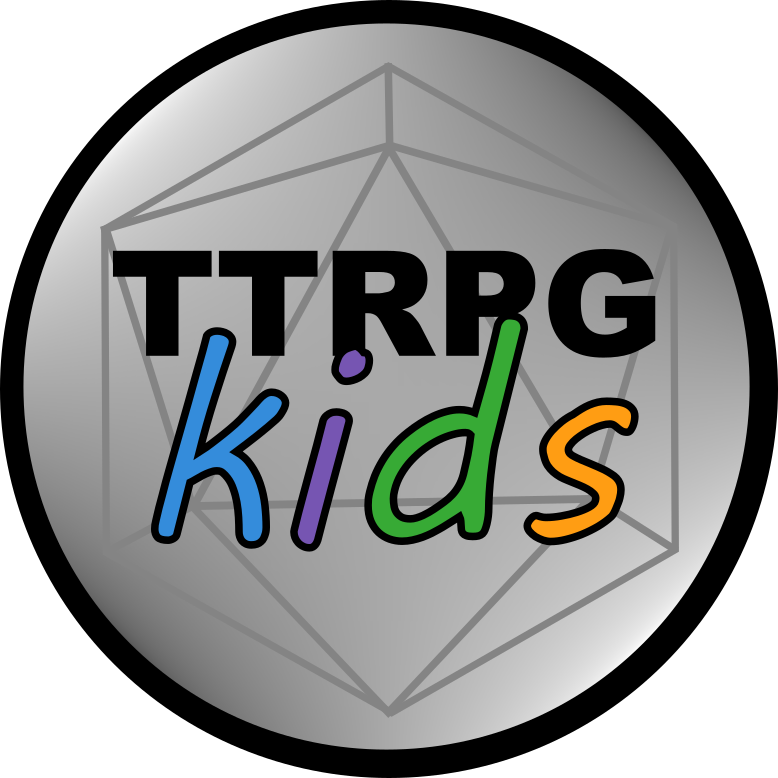How TTRPGs engage learners
Many settings (both in-game and in-learning)
Frist, when I talk about educational elements, I mean to cover a wide range of topics, methods, and environments.
From a home game with family that uses mechanics to inherently teach kids math as they play to library run TTRPGs that encourage students to read animal fact books related to the story for bonus XP in the next session to in-class games that have students playing as teams of astronauts surveying planets to learn about the solar system… there are A LOT of ways that you can use TTRPGs to teach.
And all of those examples that I listed… they definitely teach… and they all sound like something that I would have totally been up for playing as a kid (and still would be up for playing now as an adult)!
PLEASE give me bonus game points for reading! As a kid, I would have devoured those animal fact books, and now… I would probably crank through my TBR list at top speed.
YES to getting to play as an astronaut!! 8 year old me would have LOVED to play that game in class versus just reading facts out of a book, and I would probably remember everything because I had to work for it and use it…. to do well in the game. Now, I want to make an astronaut game exactly like this so I can play it with my own kid who’s getting into space stuff!
Engagement from fun and purpose
That is where TTRPGs shine. They are exciting and they tie learning elements into something that we love (the stories we’re making) to make them enjoyable and to show that learning this material has a useful purpose that can bring us happiness.
I remember loving to learn just to know new things when I was a kid. I thought Shakespeare and other planets and making graphs was cool because they were each their own story or puzzle to be discovered and messed with.
However, I also remember coming to dread a lot of it.
I didn’t want to do the same types of math problems over and over. I didn’t want to write ANOTHER weekly paper rehashing historical events from my text book when I could just talk about it. I didn’t want to do a team presentation for my science project when I knew I could do it on my own.
I knew that this was building skills for later in life so I could learn new math or express myself through writing or work on teams… but I didn’t feel that. Because of how we were measured and success was calculated, the goal had become to get a good grade then move on to next assignment. I still enjoyed learning, but the implementation of it all was not fulfilling.
TTRPGs break that.
You can immediately see how your characters use skills that they learn, and you, yourself, can see how what you’re doing affects other players at the table. The purpose is more obvious., and, while there may still be a grade in a classroom setting, the focus becomes more on following the narrative or exploring than it is about achieving a particular number for the class.
It provides players with something that feels more meaningful so they are invested in participating, and it gives a purpose, whether in game or in real life, for learning the required material.
From required material to inherent elements
That engaged learning that happens during a TTRPG is also not constrained solely to the “required” or intentionally educational material that we put into the story.
By nature of what they are, TTRPGs generally require us to read game books, practice math, take notes, communicate, problem solve, manage resources like money and mana, exercise empathy, understand that there’s consequences to actions, speak in front of a group, and so on… they challenge us in MANY ways that get players to practice skills that aren’t explicitly taught through a classroom lecture.
For kids, it also allows them opportunities for autonomy that adults many times do not give them due to safety or available resources, and practicing skills that grown ups think are mundane can be really exciting!!
For example, my kid LOVES going shopping in TTRPGs because he gets to be in charge of everything he buys (unlike our usual shopping trips where I need to say no to getting a new stuffie every time we pass the seasonal toy section near the check out). He goes to the in-game shop with a certain amount of coins and has to choose between basic necessities, new gear, and stuff that looks cool but that isn’t maybe too useful.
He learns by acting this out through the game why I have to say no sometimes, what a budget is, and how to prioritize needs while maybe saving up for fun stuff once in a while. This is such an important life skill, and it’s one of his favorite parts!! It’s also not something that he would get a ton of practical exposure to in school, so it’s critical that he’s taught about it at home.
Whether looking at academics, social skills, general life skills, or any other form of knowledge and wisdom that these games can support, TTRPGs, as a whole, offer students or players of any age the opportunity to creatively learn in a way that’s enjoyable, exciting, and just… makes us happy. Having that bit of happiness attached to it magnifies the impact that the material can have while also benefiting a person’s quality of life.
If you liked this post, make sure to subscribe to the TTRPGkids monthly newsletter to stay up to date on the latest guest posts, reviews, tips and tricks, game and podcast list updates, and more! Thank you for playing tabletop RPGs with your kids and sharing this awesome hobby with the next generation!


